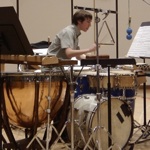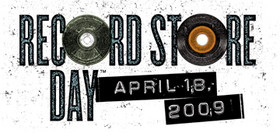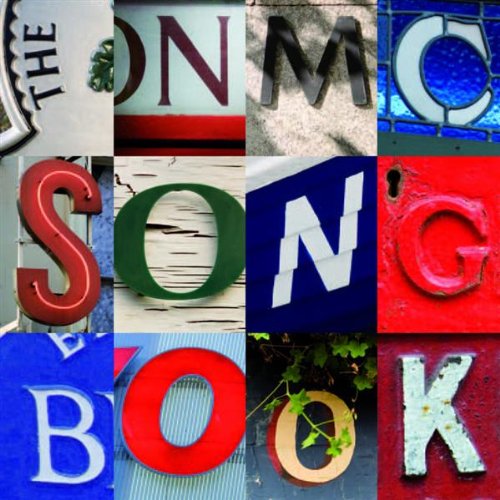 Sunday afternoon was the final concert provided by Esa-Pekka Salonen as Music Director of the Los Angeles Philharmonic. He has consistently said that he’ll be back with us on a regular basis, but before the start of the concert, the administrative management and the Board came on stage to announce to us the Salonen now has the title of Conductor Laureate and will return on a regular and “significant” basis in the future. The nature of the continuing role was not announced, but it is consistent with how well the Phil (and Salonen) have handled this transition that the details on the role of the future would wait to be announced until after Dudamel is on board and present.
Sunday afternoon was the final concert provided by Esa-Pekka Salonen as Music Director of the Los Angeles Philharmonic. He has consistently said that he’ll be back with us on a regular basis, but before the start of the concert, the administrative management and the Board came on stage to announce to us the Salonen now has the title of Conductor Laureate and will return on a regular and “significant” basis in the future. The nature of the continuing role was not announced, but it is consistent with how well the Phil (and Salonen) have handled this transition that the details on the role of the future would wait to be announced until after Dudamel is on board and present.
One of the most significant composers to Salonen as conductor, as composer, and as musician has been Igor Stravinsky. The times he has given us as music director of the Phil are studded with some memorable performances of Stravinsky works. The Rite of Spring has become a signature piece of the orchestra under Salonen. If my memory is correct, the first association of the Phil, Salonen, and Peter Sellars was a production of l’Histoire du Soldat given in the Dorothy Chandler, which had the somewhat-embarrassed Salonen in cowboy boots, still awkward at having a stage role. For his final series of concerts as music director, Salonen chose Stravinsky; Salonen chose a double bill of Oedipus Rex and Symphony of Psalms. I think it was typical of his personality that he chose works that required group forces, soloists and chorus, making it easier for Salonen the person to diffuse the focus on Salonen as the exiting music director. He also had thoughts about these works, interpretations he wanted to provide us.
Salonen gave us a powerful, emotional performance of Oedipus. From the starting anguish of the mens chorus, the citizens of Thebes suffering under the plague, to the powerful conclusion as the fates had acted this was a gripping performance. The orchestra and the members of the master chorale gave us the music with power and with emotion. At times on Sunday, however, the power seemed to drown out the voices of two of the lead singers. Following the terrible events of the Oedipus, Salonen’s Symphony of Psalms was healing and consolation, a blessing at the end.
Peter Sellars’ concept was to link the two works, following the concept that Stravinsky was experiencing a development of his own religious beliefs during the period of composition. Sellars’ concept was to have the narrator of Oedipus become the daughter, Antigone, and the text of the narration was edited to fit this concept. The approach gave much more immediacy to the communication of the narrator. Then for Symphony of Psalms, Sellars imagined this as a musical equivalent of the concluding play in the Oedipus trilogy, the work to bring consolation and closure to the experience. He gave the narrator, Antigone, an introductory speech that may have been taken from “Oedipus at Colonus”, and he also brought Oedipus on stage for movements to image the closure of the trilogy. (Sellars had also introduced the second daughter, Ismene, a dancer in a non-speaking role, to aid the movements in both works, further promoting the concept.) Sellars used the flexibility of Frank Gehry’s design for the Disney Hall stage and auditorium. Oedipus was given three levels for its performance, a level for the orchestra, a level for the chorus, and a level for the characters. Further, the announcement of the death of Jocasta and the blinding of Oedipus could be made from the top left tier of the hall. For Symphony of Psalms, the chorus first lined the side aisles of the front and back of the auditorium, before crossing to the top of the three levels while Antigone, Ismene and the blinded Oedipus were given the middle level for their closing pantomime. I thought the whole concept worked brilliantly. Viola Davis was excellent as narrator/Antigone. Of the singers, Anne Sofie von Otter was particularly notable in the small, crucial role of Jocasta while Roderick Dixon was an affecting Oedipus.
Salonen had avoided much of the applause the audience wanted to give him at the start of the concert and the second half. But when he finally lowered his arms as silence emerged in the hall after the conclusion of Symphony of Psalms the torrent of applause began. We all rose to our feet, clapping. No one hurried out to beat the parking lot traffic. We applauded. Salonen came out for a bow. We kept applauding. The orchestra members were applauding. Quite a few of us were wiping our eyes. Then members of the orchestra who hadn’t been used in Symphony (violins, violas, a few others) came down from their seats in back, with the women carrying bouquets of flowers for Salonen; he had to accept those, one by one. Finally the members of the orchestra lined up to walk by and hug Salonen, as the applause continued. Then the end came. What a set of memories!
The Los Angeles Times has two nice galleries of photos of the performances on their web site, here and here.
 It’s hard to imagine a percussionist that you would want to perform your music more than
It’s hard to imagine a percussionist that you would want to perform your music more than  The spring festivals are underway; here are three you should know about.
The spring festivals are underway; here are three you should know about.

 Last night Salonen conducted the premiere of his new Violin Concerto, performed by
Last night Salonen conducted the premiere of his new Violin Concerto, performed by  The days dwindle down. For April we had only three remaining programs conducted by Esa-Pekka Salonen as music director of the Los Angeles Philharmonic, and after last night only two programs remain. Last night’s Green Umbrella concert gave us a look forward, plus just a touch of reminiscence. There could well have been a concert of Salonen’s works, but a retrospective of the man as composer (and as engine for the Green Umbrella series) can wait for a future year and a future visit. Instead, the program was a beautifully selected set of four world premieres by composers new to almost every one in the Disney Hall audience. And for the selection, in addition to Salonen we have to honor the inputs of the Phil’s advisor for new music,
The days dwindle down. For April we had only three remaining programs conducted by Esa-Pekka Salonen as music director of the Los Angeles Philharmonic, and after last night only two programs remain. Last night’s Green Umbrella concert gave us a look forward, plus just a touch of reminiscence. There could well have been a concert of Salonen’s works, but a retrospective of the man as composer (and as engine for the Green Umbrella series) can wait for a future year and a future visit. Instead, the program was a beautifully selected set of four world premieres by composers new to almost every one in the Disney Hall audience. And for the selection, in addition to Salonen we have to honor the inputs of the Phil’s advisor for new music, 